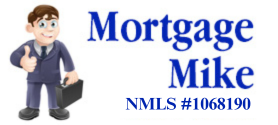Reverse Mortgages Can Provide Retirement ‘Safety Net’
A reverse mortgage can be a viable financial product for seniors looking to protect their retirement assets from a volatile influencer like the stock market, while also reducing the risk of a retiree exhausting all of their financial resources in retirement. This is according to an article on funding longevity recently published in Kiplinger.
“Reverse mortgages have often been branded as a way for older retirees to raise money only when other sources of retirement income have dried up,” writes Eileen Ambrose and Sandra Block, two of Kiplinger’s senior editors. “But a growing group of financial planners and academics say that taking out a reverse mortgage early in retirement could help protect your retirement income from stock market volatility and significantly reduce the risk that you’ll run out of money.”
For a “standby reverse mortgage,” a retiree can take out a reverse mortgage line of credit and set it aside. Then, if the stock market falls, the line of credit can be drawn from to pay day-to-day expenses until a portfolio recovers. Retirees who follow a strategy like this should be able to “avoid the pitfalls of the Great Recession,” Ambrose and Block write, when many seniors were forced to take money out of depressed portfolios to pay their bills.
This strategy can be effective, “both from a practical and a behavioral perspective,” says Harold Evensky, a certified financial planner and chairman of Evensky and Katz/Foldes Financial to Kiplinger. “If people know they’ve got resources when the market collapses, they don’t panic and sell.”
While a traditional home equity line of credit (HELOC) can also provide a potential source of emergency cash, a reverse mortgage line of credit can be more reliable in the event of a market downturn as demonstrated by history, according to the founder of the Academy of Home Equity in Financial Planning at the University of Illinois at Urbana Champaign, Shelley Giordano.
“Just when people needed money and liquidity [during the Great Recession], the banks needed liquidity, too,” Giordano tells Kiplinger.
During the 2008–09 financial crisis, many banks either froze or outright closed borrowers’ home-equity lines. That will not happen on a reverse mortgage line of credit, Giordano says.
“As long as you meet the terms of the reverse mortgage—you must maintain your home and pay taxes and insurance—your line of credit is guaranteed,” Ambrose and Block write.
Also adding to the increased attractiveness of reverse mortgages is a currently-beneficial rate climate, the amount of housing wealth that seniors currently maintain, and the fact that an untapped credit line increases as time goes by, according to the writers and Giordano.
Read the story at Kiplinger.
Article by Chris Clow on reversemortgagedaily.com


